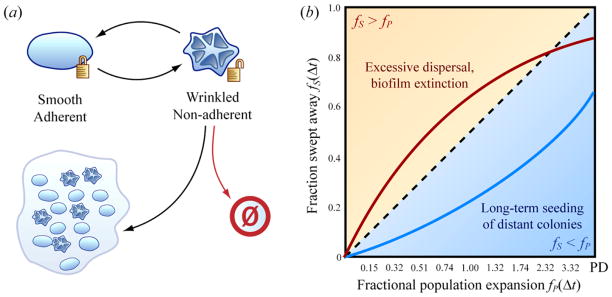Figure 4.

Simplified model for phenotypic switching and survival in biofilm communities. (a) Single cells of the fungus C. neoformans phenotypically switch in biofilms between simplified adherent and non-adherent states. Dispersing non-adherent cells can result in seeding new colonies, but can also result in failure to seed and cell death. (b) Excessively rapid generation of non-adherent cells corresponds to locations above the diagonal (fS > fP) in the metronomogram, corresponding to eventual extinction of the primary biofilm. If the generation of non-adherent cells is slow compared to cell population expansion, the dynamics of the population are described by positions in the metronomogram below the diagonal (fS < fP), corresponding to expansion of the population of the primary biofilm colony.
